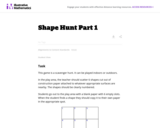
In this scavenger hunt game students practice copying shapes.
- Subject:
- Geometry
- Mathematics
- Material Type:
- Activity/Lab
- Provider:
- Illustrative Mathematics
- Provider Set:
- Illustrative Mathematics
- Author:
- Illustrative Mathematics
- Date Added:
- 07/20/2012

In this scavenger hunt game students practice copying shapes.
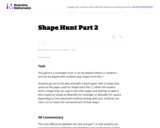
In this scavenger hunt games students are given the task of finding and identifying real-world shapes in their environment.

In this "word search" style puzzle students practice identifying sequences of shapes.

Students gain experience and practice with three types of word problems using the "Take From" context: result unknown, change unknown, and start unknown.

This task requires students to be able to reason abstractly about fraction multiplication as it would not be realistic for them to solve it using a visual fraction model. Even though the numbers are too messy to draw out an exact picture, this task still provides opportunities for students to reason about their computations to see if they make sense.

Students should think of different ways the cylindrical containers can be set up in a rectangular box. Through the process, students should realize that although some setups may seem different, they result is a box with the same volume. In addition, students should come to the realization (through discussion and/or questioning) that the thickness of a cardboard box is very thin and will have a negligible effect on the calculations.

In this task students use ratio and rate reasoning to solve a problem involving a sales item.
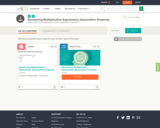
This short video and interactive assessment activity is designed to teach third graders about shortening multiplication expressions (associative property).
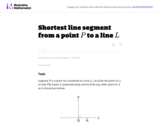
This is a foundational geometry task designed to provide a route for students to develop some fundamental geometric properties that may seem rather obvious at first glance. In this case, the fundamental property in question is that the shortest path from a point to a line meets the line at a right angle, which is crucial for many further developments in the subject.

The purpose of this task is to have students complete normal distribution calculations and to use properties of normal distributions to draw conclusions. The task is designed to encourage students to communicate their findings in a narrative/report form in context Đ not just simply as a computed number.

This word problem is based estimating the height of a person over time. Note that there is a significant amount of rounding in the final answer. This is because people almost never report their heights more precisely than the closest half-inch. If we assume that the heights reported in the task stem are rounded to the nearest half-inch, then we should report the heights given in the solution at the same level of precision.

It is possible to say a lot about the solution to an equation without actually solving it, just by looking at the structure and operations that make up the equation. This exercise turns the focus away from the familiar Ňfinding the solutionÓ problem to thinking about what it really means for a number to be a solution of an equation.
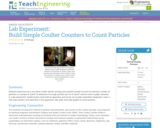
Students build and use a very basic Coulter electric sensing zone particle counter to count an unknown number of particles in a sample of "paint" to determine if enough particles per ml of "paint" exist to meet a quality standard. In a lab experiment, student teams each build an apparatus and circuit, set up data acquisition equipment, make a salt-soap solution, test liquid flow in the apparatus, take data, and make graphs to count particles.
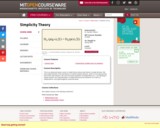
This is an advanced topics course in model theory whose main theme is simple theories. We treat simple theories in the framework of compact abstract theories, which is more general than that of first order theories. We cover the basic properties of independence (i.e., non-dividing) in simple theories, the characterisation of simple theories by the existence of a notion of independence, and hyperimaginary canonical bases.
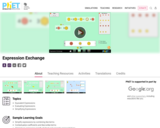
Build coin expressions, then exchange them for variable expressions. Simplify and evaluate expressions until you are ready to test your understanding of equivalent expressions in the game!

This short video and interactive assessment activity is designed to teach fifth graders about single-unit, multi-step problems - word problems.
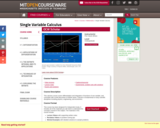
This calculus course covers differentiation and integration of functions of one variable, and concludes with a brief discussion of infinite series. Calculus is fundamental to many scientific disciplines including physics, engineering, and economics.

In this activity students become familiar with the words, Ňtaller/shorterÓ as they refer to height.
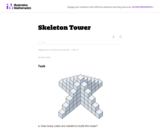
This problem is a quadratic function example. The other tasks in this set illustrate F.BF.1a in the context of linear (Kimi and Jordan), exponential (Rumors), and rational (Summer Intern) functions.
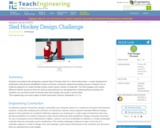
Students are tasked with designing a special type of hockey stick for a sled hockey team—a sport designed for individuals with physical disabilities to play ice hockey. Using the engineering design process, students act as material engineers to create durable hockey sticks using a variety of materials. The stick designs will contain different interior structures that can hold up during flexure (or bending) tests. Following flexure testing, the students can use their results to iterate upon their design and create a second stick.